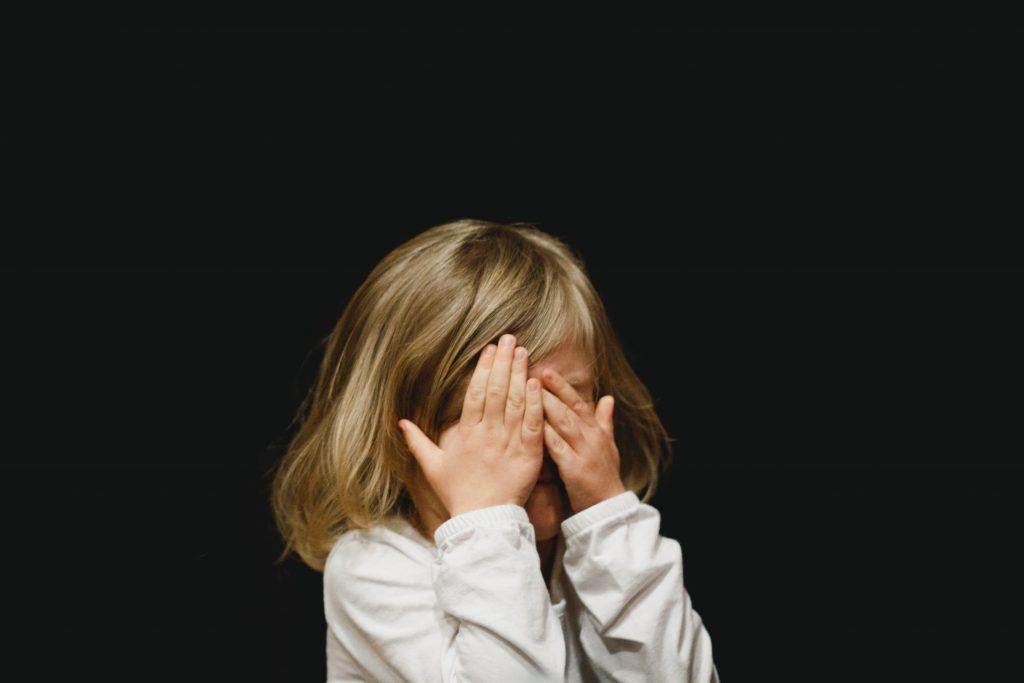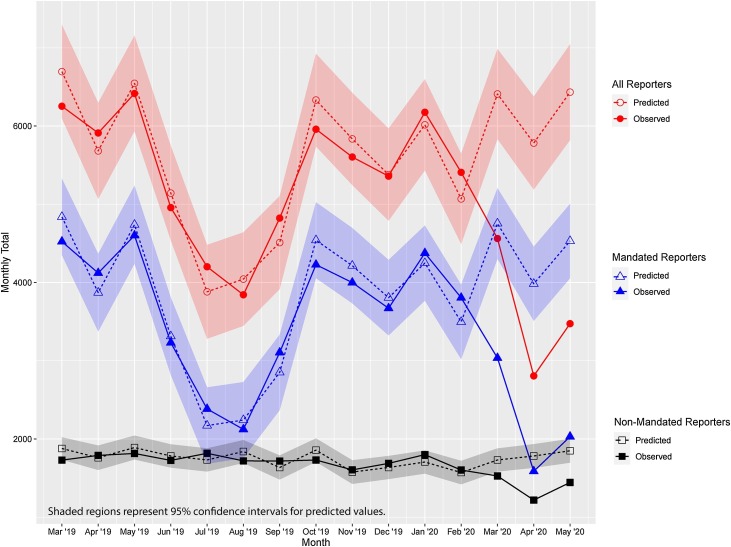
Child maltreatment is the abuse and neglect that occurs to children under 18 years of age. It includes all types of physical and/or emotional ill-treatment, sexual abuse, neglect, negligence and commercial or other exploitation, which results in actual or potential harm to the child’s health, survival, development or dignity in the context of a relationship of responsibility, trust or power (WHO, 2020).
Vulnerable people such as children are the one who suffer a lot during disaster and public health crisis. Despite this, their needs are often forsaken. Even though the COVID-19 infection on children is commonly mild, the long-term effects of the pandemic on children are still unknown.

The figure shows observed and predicted values for the number of allegations of child maltreatment reported to the Administration for Children’s Services in New York City from March 2019 to May 2020. Predicted values for March 2019 to February 2020 were derived from SARIMA models trained using data from January 2015 up to, but not including, the month being predicted. Predicted values for March 2020 to May 2020 were derived from SARIMA models trained using data from January 2015 to February 2020.
Child maltreatment is a global problem with serious life-long consequences associated with impairments in psychological and behavioral functions. There are several form of child maltreatments and are often coexist and overlap. The 4 main forms include:
- Physical abuse
The actions causing injury or trauma to children by way of bodily contact.
- Sexual abuse
The act of using children for sexual stimulation.
- Emotional abuse
The use of words or action that cause emotional harm.
- Neglect
The failure to provide for or meet a child’s basic physical, emotional, educational, and medical needs.
Types of neglect:
- Physical neglect (inability to provide enough food, clothing, shelter, and protection from potential harm).
- Emotional neglect (inability to provide love or other kinds of emotional support).
- Educational neglect (inability to enroll a child in school, ensure attendance at school, or provide home schooling).
- Medical neglect (inability to ensure that a child receives appropriate care or needed treatment for injuries or physical or mental disorders).
Several potentially aggravated risks during this pandemic – such as parenting stress, financial stress, phycological distress, depression, anxiety, post-traumatic stress disorder caused by severe illness or the loss of love ones which is overwhelmed by cancellation of funeral and reduction of grief support group, increased drug abuse, physical isolation, and negative interaction with children – lead to increased number of child maltreatment.
Community mitigation might be one of the ways to shrink the number of cases reported. Families may have less contact with adults outside their home due to this physical isolation. During the normal time, neighborhood provide support and protection for vulnerable children and are often the first to acknowledge and report suspected child mistreatment. Nearly two-thirds of reports of child abuse and neglect are made by professionals who have work-related contact with children, including teachers, law enforcement personnel, social services workers, and health care providers.
Level of Prevention Services according to www.childwelfare.com:

Things that we can do as youth are:
- Public awareness campaign through education of parents and caregivers
- Promote norms and values that support pro-social, non-violent behavior
- Education and life skills training to improve children’s knowledge of abusive situation and teach them social skills to protect themselves and to interact in positive ways
“Children are the world’s future, and we need to take care of them like we would any precious resource.” – Ziggy Marley.
REFERENCES
Lawson, M., Piel, M. H. and Simon, M. (2020) ‘Child Maltreatment during the COVID-19 Pandemic: Consequences of Parental Job Loss on Psychological and Physical Abuse Towards Children’, Child Abuse and Neglect. Elsevier Ltd, 110, p. 104709. doi: 10.1016/j.chiabu.2020.104709.
Child maltreatment Available at: https://www.who.int/news-room/fact-sheets/detail/child-maltreatment (Accessed on December 22, 2020)
Rapoport, E. et al. (2020) ‘Reporting of child maltreatment during the SARS-CoV-2 pandemic in New York City from March to May 2020’, Child Abuse and Neglect. Elsevier Ltd. doi: 10.1016/j.chiabu.2020.104719.
What causes child abuse | Community support | Queensland Government (no date). Available at: https://www.qld.gov.au/community/getting-support-health-social-issue/support-victims-abuse/child-abuse/child-abuse-causes (Accessed on December 23, 2020)
Child abuse and neglect in the COVID-19 era: A primer for front-line physicians in British Columbia | British Columbia Medical Journal (no date). Available at: https://bcmj.org/articles/child-abuse-and-neglect-covid-19-era-primer-front-line-physicians-british-columbia (Accessed on December 24, 2020)
Maltreatment, C. The Health Sector Responds. Available at: https://www.who.int/violence_injury_prevention/violence/child/Child_maltreatment_infographic_EN.pdf?ua=1 (Accessed on December 23, 2020)
Overview of Child Maltreatment – Pediatrics – MSD Manual Professional Edition (no date). Available at: https://www.msdmanuals.com/professional/pediatrics/child-maltreatment/overview-of-child-maltreatment (Accessed on December 23, 2020)
Welfare Information Gateway, C. (no date) Child Maltreatment Prevention: Past, Present, and Future. Available at: https://www.childwelfare.gov/topics/preventing/overview/framework/ (Accessed on December 23, 2020).
CURIOUS by
Patrick Limbardon
CIMSliography
1. Human Rights Trainer SCORP-CIMSA (2019 – now)
2. Media and Communication Coordinator CIMSA USU (2020 – now)
3. Fundraising and Merchandise Team CIMSA USU (2019 – 2020)
4. SWG Team HRD SCORP-CIMSA 2020